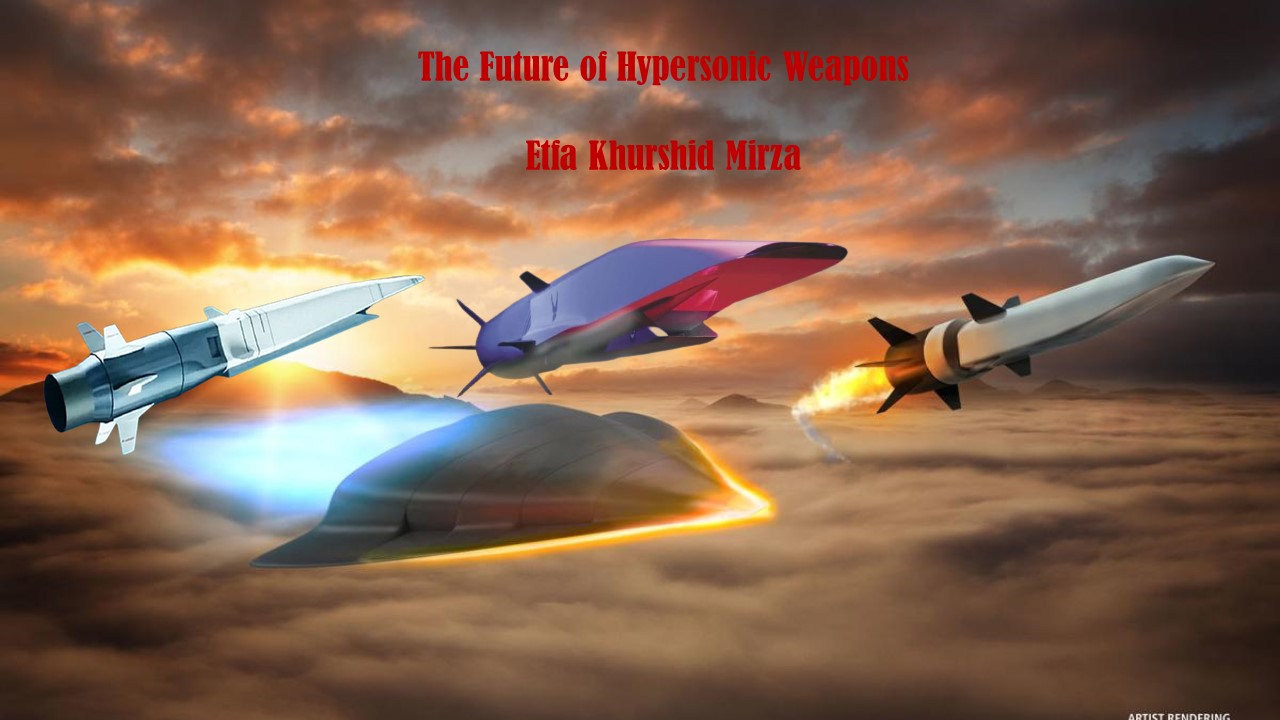With increasing competition in emerging technologies between technologically advanced countries, the arms race has intensified and the acquisition of technologies like hypersonic weapons has become a priority for major players. While competition between the United States (US), Russia and China in the hypersonic domain is increasing – Russia, the leader in hypersonic weapons technology, has announced operationalizing its second regiment of Intercontinental Ballistic Missiles (ICBMs) with Avangard hypersonic glide vehicle (HGV) by 2023.
On the other side, while the US is chasing Russia to acquire hypersonic weapons, it still has to cover a lot of ground. It is in the process of building a test facility at Purdue for its hypersonic missile tests. In March 2020, the US country conducted a successful test of hypersonic glide body (HGB) after a number of attempts. In spite of a stressed economy due to COVID-19, the US is spending huge amounts on hypersonic research and development and President Biden has requested Congress for an increase of 20% to its research and development budget.
While the US is still in the process of becoming a hypersonic power, Russia in 2019 operationalized its first regiment equipped with Avangard HGV. Moreover, Russia is also the first country to complete testing of Hypersonic Cruise Missile (HCM) Zircon.
If we look at history, the US’ hypersonic project X-20 Dyna-soar started in the late 1950s, but it was shelved. After its closure due to several failed attempts in testing hypersonic technology in 2010 and 2011, hypersonic weapons development was revived again after the Chinese tested their HGV in 2017. On the other hand, Russian hypersonic developments began in early 2000s and now they have reached the operational phase. Meanwhile, China reportedly, successfully tested its DF-ZF HGV in 2017. According to one expert, whether the US acknowledges it or not, Russia and China are ahead of it in the hypersonic race and have shifted the strategic balance towards their side already.
In the South Asian region, India has become the fourth country in the world to have successfully tested its hypersonic missile technology. Russia’s success in hypersonic cruise missile Zircon is good news for India as well, as the BrahMos-II is a variant of Russian HCM Zircon. If we analyze Indian pursuit of becoming a hypersonic weapons state, it is more of about prestige than countering an adversary like Pakistan that has no hypersonic weapons. Another reason could be, to have the ability to launch counterforce offensive strikes, which will be an added advantage. But, will the hypersonic weapons in South Asia have the same utility as in the case of Russia, US or China? It is highly unlikely. The reason for this because the ballistic and cruise flight time between the two countries is already short.
In view of the Indian threat, Pakistan is also considering having its own hypersonic development programme. According to former Naval Chief Admiral Zafar Mehmood Abbasi, Pakistan Navy is developing hypersonic P282 ballistic missile considering emerging threats from its eastern neighbor. Whether Pakistan can sustain a hypersonic weapons programme or not is a separate debate, but it will significantly enhance the country’s capability to have a tit-for-tat response to India in case of any counterforce conventional strike.
With no political will to regulate such emerging technologies, there is a fear of proliferation. For example, India was able to develop BrahMos–II with Russian help. In India, cases of radioactive materials theft are increasing day-by-day, and in last three months, there have been three cases of uranium and radioactive substance theft and illegal sale. Pakistan has repeatedly expressed its concerns about this, but the international community is silent. Providing such a country a window of opportunity, be it hypersonic technology, could be alarming not only for regional but global peace as well.
The challenge for all the states is not only the development of hypersonic weapons but to introduce countermeasures as well. For example, in Russia, the new air defense system S-500 is claimed to have the capability to counter hypersonic missiles as well. Similarly, the US and China are working on Directed Energy Weapons (DEWs) and anti-satellite weapons as a counter to hypersonic weapons. Japan, wary of China’s hypersonic missiles threat, is also moving to develop its own countermeasures using unmanned aerial vehicles (UAVs).
Hypersonic weapons, on the one hand, are leading to an arms race and on the other hand, affect strategic stability. After Russian operationalization of Zircon HCM, India will gain confidence to operationalize its BrahMos–II as well that will perturb the strategic stability of South Asia. Similarly, the US will come under pressure to advance its hypersonic programme to the next level, compelling other states to engage in such ventures. For now, it is quite apparent that the hypersonic race is on and countries are out to chase it.
Etfa Khurshid Mirza is a researcher at Centre for Aerospace & Security Studies (CASS), Islamabad, Pakistan. the article was first published in Modern Diplomacy. She can be reached at [email protected]
Image Source: Etfa Khurshid Mirza





